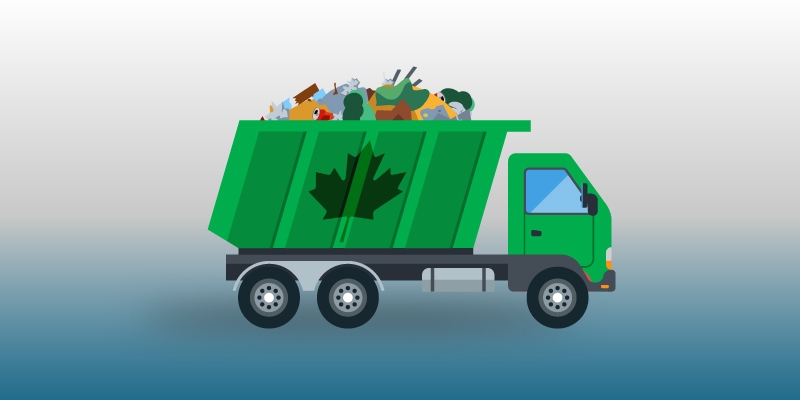Generation and Management of Municipal Solid Waste: How’s Canada Doing?

Solid waste affects people’s health and the environment surrounding them. Poorly managed solid waste accumulates in local bodies of water, oceans, and forests, degrading our ecosystems and negatively impacting human health. Therefore, appropriate management of solid waste is a particularly important public policy goal. This study examines the state and evolution of the generation and management of Municipal Solid Waste (MSW)—more commonly known as trash or garbage—in Canada over the past two decades, using official data and government reports.
Overall, as Canada’s population and economy grew between 2002 and 2018, so did total waste generation. Canadians generated 35.5 million tonnes of MSW in 2018—16 percent more than in 2002 when 30.7 million tonnes were generated. However, when we account for population and economic activity, Canadians are generating less waste over time—2 percent less on a per-capita basis and 23 percent less per unit of GDP in 2018 compared to 2002. The fact that Canada’s waste generation rate grew more slowly than its GDP from 2002 to 2018 suggests that Canada has partially decoupled waste generation from economic growth.
While per-capita waste generation is declining in Canada, data shows that solid waste generation from residential sources is on the rise and now makes up over 40 percent of total waste generated. On the other hand, waste generation from non-residential sources—which include industrial, commercial, and institutional sources—declined between 2002 and 2016.
Similarly, Canadians are disposing of less waste over time—10 percent less on a per-capita basis and 29 percent less per unit of GDP in 2018 compared to 2002.
In addition, waste diversion has steadily increased in Canada. In 2018, about 28 percent of MSW was diverted in Canada—chiefly comprised of paper fibres and organics—compared to almost 22 percent in 2002. In 2018, the remaining 72 percent of waste, which is largely comprised of food and plastics, was disposed of mostly in landfills. Overall, Canada’s waste management still relies on landfills despite significant increases in diversion rates.
Furthermore, while most Canadian provinces have reduced waste generation and disposal over time (relative to economic activity and population), progress varies. New Brunswick saw the greatest increase in per-person waste generation and disposal (20 percent and 19 percent respectively), going from 726 kg of solid waste generated per person and 552 kg of solid waste disposed per person in 2002 to 872 kilograms of waste generated and 659 kg of waste disposed in 2018. On the other hand, British Columbia saw one of the highest declines in these metrics, with a 7 percent decrease in generation and a 17 percent decrease in disposal. Following British Columbia, Quebec and Ontario also made notable progress, reducing per-person waste generation by 3 percent and 5 percent, respectively, and by reducing their waste disposal per person figures by 16 percent and 12 percent, respectively.
Overall, Nova Scotia and British Columbia have the lowest disposal rates in the country, relative to both economic activity and population, while Manitoba has one of the highest.
Similarly, almost all provinces increased their diversion rates (i.e., the amount of MSW diverted as a proportion of waste generated) since 2002, with the exceptions of Manitoba and Alberta. Nova Scotia, which increased its diversion rate by 12 percent between 2002 and 2018, has the highest diversion rate in the country with almost half of its total amount of waste generated diverted from landfills. British Columbia is a close second with a diversion rate of almost 40 percent while Newfoundland and Labrador has the lowest diversion rate, at 10 percent. The largest provinces, Ontario and Quebec, have diversion rates of 25 percent and 33 percent, respectively.
Overall, the evidence illustrates that, when we account for population and economic activity, Canada has generated and disposed of less waste over the past two decades. On balance, the fact that Canada partially decoupled solid waste generation and disposal from economic growth is good news for the environment. Moreover, the country’s progress in reducing per-capita solid waste disposal and waste disposal intensity, paired with increasing diversion rates, speaks volumes for Canada’s stellar environmental performance and builds on its already impressive environmental track record.
Authors:
More from this study
Subscribe to the Fraser Institute
Get the latest news from the Fraser Institute on the latest research studies, news and events.



